 1974 Volkswagen Golf I (3-door) Dimensions, Size & Specs
1974 Volkswagen Golf I (3-door) Dimensions, Size & SpecsMeasurements of the 1974 Volkswagen Golf I, engineered for optimal performance and comfort
| Dimensions | |
|---|---|
| Length: | 3723 mm146.6 in12.2 ft |
| Width: | 1610 mm63.4 in5.3 ft |
| Height: | 1410 mm55.5 in4.6 ft |
| Ground Clearance: | 124-125 mm4.9-4.9 in0.4-0.4 ft |
| Trunk Capacity: | 368 liter13.0 cu ft |
| Trunk Capacity (Max): | 1102 liter38.9 cu ft |
| Weight Specifications | |
| Curb Weight: | 750-830 kg1653-1830 lbs |
| Maximal permitted Weight: | 1170-1250 kg2579-2756 lbs |
| Tire Specifications | |
| Rims Sizes: | 13-inch rims:
|
| Tire Sizes: |
|
The Volkswagen Golf I (3-door) is the inaugural generation of the iconic Golf hatchback, produced from 1974 to 1983. This compact car boasts practical dimensions with a length of 3723 mm (146.5 inches), a width of 1610 mm (63.4 inches), and a height of 1410 mm (55.5 inches), making it a quintessential compact hatchback designed for both city commuting and versatile everyday use. Its curb weight ranges between 750 and 830 kg (1653 to 1829 lbs), and the maximum weight falls between 1170 and 1250 kg (2579 to 2756 lbs), reflecting a lightweight framework contributing to efficient fuel consumption and agile handling. The Golf I offers a generous luggage capacity of 368 liters (13 cubic feet), which expands to 1102 liters (38.9 cubic feet) when the rear seats are folded down, providing enhanced cargo space for larger loads. Ground clearance is maintained at about 124-125 mm (4.9-4.9 inches), suitable for varied road conditions without compromising ride comfort. The vehicle supports a range of rim sizes from 5J x 13 up to 6J x 14, paired with tires ranging from 175/70 R13 to 185/60 R14, ensuring varied options for performance and style preferences. Overall, the Volkswagen Golf I (3-door) established a significant legacy in the compact hatchback segment with its balanced size, lightweight structure, and versatile cargo capacity, setting the stage for future generations of the Golf model line.
Discover the standout features that make the 1974 Volkswagen Golf I a leader in its class
Have a question? Please check our knowledgebase first.
The Volkswagen Golf I 3-door hatchback has a length of 3723 mm (146.6 inches), a width of 1610 mm (63.4 inches), and a height of 1410 mm (55.5 inches). These compact dimensions made the Golf I well-suited for urban driving and easy maneuverability, reflecting the car's position as a practical and efficient hatchback of its era.
The curb weight of the Volkswagen Golf I ranges between 750 and 830 kg (1653 - 1830 lbs), depending on the specific model variant and equipment. The maximum permissible weight is between 1170 and 1250 kg (2579 - 2756 lbs). This relatively light weight contributed to the vehicle's nimble handling and fuel efficiency, which were notable features in the compact car segment.
With all seats in place, the Volkswagen Golf I provides a decent luggage capacity of 368 liters (13.0 cubic feet). When the rear seats are folded down, the luggage space expands significantly to 1102 liters (38.9 cubic feet). This flexibility ensured practicality for everyday use as well as for carrying larger cargo, making it a versatile hatchback despite its compact footprint.
The Volkswagen Golf I has a ground clearance of 124 to 125 mm (4.9 to 4.9 inches). This ride height was typical for compact cars of the era, providing a balance between road-holding stability and adequate clearance over common road obstacles. The modest ground clearance also contributed to the car’s efficient aerodynamics and handling characteristics.
The Volkswagen Golf I came with various rim sizes including 5J x 13, 4.5J x 13, 5.5J x 13, and 6J x 14 inches. Corresponding tire sizes included 175/70 R13, 175/50 R13, and 185/60 R14. These sizes gave the Golf a good balance of ride comfort, grip, and handling, optimizing performance typical of compact hatchbacks in the 1970s and early '80s.
Yes, the Volkswagen Golf I 3-door hatchback comfortably fits into a standard residential garage. With a length of 3723 mm (146.6 inches) and width of 1610 mm (63.4 inches), it is smaller than many modern cars and even smaller compact cars today. Typical garages, which often have widths of about 2400 mm (94 inches) or more and lengths exceeding 4800 mm (189 inches), provide ample space for the Golf I, including room to open doors and store small items around the car.
Compared to its predecessor, the Volkswagen Beetle, the Golf I represented a shift to a front-engine, front-wheel-drive hatchback layout with more modern dimensions. The Beetle was approximately 4070 mm (160.2 inches) long and 1600 mm (63 inches) wide, making it longer but similarly narrow. The Golf I was shorter at 3723 mm (146.6 inches) but wider at 1610 mm (63.4 inches), offering a more spacious interior and better utilization of cabin volume with a hatchback design. The new layout improved practicality and space efficiency, signaling Volkswagen's modernization.
In comparison to contemporaries like the Ford Fiesta Mark I and the Renault 5, the Volkswagen Golf I is competitive in size. The Ford Fiesta Mark I measured around 3600 mm (141.7 inches) in length, slightly shorter than the Golf’s 3723 mm (146.6 inches). The Renault 5 was approximately 3495 mm (137.6 inches) long, narrower and shorter than the Golf. The Golf I’s slightly larger footprint translated into more interior space and luggage capacity, which helped establish its reputation as a practical yet compact hatchback choice during the 1970s and early 1980s.
The compact dimensions of the Volkswagen Golf I contributed significantly to its market success. Its manageable length of 3723 mm (146.6 inches) enabled easy navigation through tight city streets and parking spaces, while the 1610 mm (63.4 inches) width allowed for a comfortable interior without excessive bulk. When combined with a practical hatchback design featuring flexible luggage capacity, it catered to a wide audience looking for a versatile vehicle. This practicality, coupled with solid build quality, efficient use of space, and modern styling, helped the Golf I become one of the most influential compact cars ever produced.
The Volkswagen Golf I (3-door) introduced in 1974 was Volkswagen’s first front-engine, front-wheel-drive hatchback and marked a departure from the rear-engine Beetle. It is known for its solid build, simple yet functional design, and reliable performance. The Golf I revolutionized the compact car segment with its practical hatchback layout, good fuel economy, and versatile interior space, including a surprisingly large luggage area for its size. The car's light weight (750 to 830 kg or 1653 to 1830 lbs) and nimble handling made it popular among drivers. Over its production run till 1983, it received various updates in styling, engines, and trim levels, maintaining its competitive edge in the market.
Discover similar sized cars.
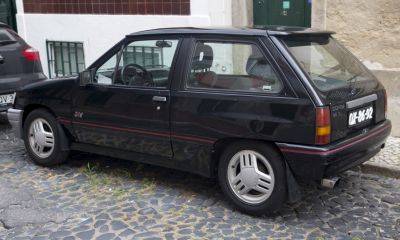
| Production: | 1990-1993 |
|---|---|
| Model Year: | 1990 |
| Length: | 3652 mm143.8 in |
| Width: | 1532-1542 mm60.3-60.7 in |
| Height: | 1365 mm53.7 in |
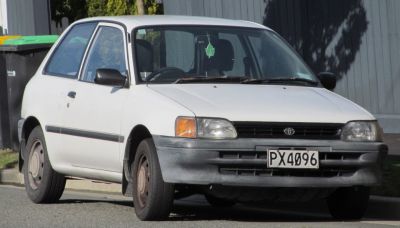
| Production: | 1989-1996 |
|---|---|
| Model Year: | 1990 |
| Length: | 3720 mm146.5 in |
| Width: | 1600 mm63.0 in |
| Height: | 1380 mm54.3 in |

| Production: | 1971-1986 |
|---|---|
| Model Year: | 1971 |
| Length: | 3625 mm142.7 in |
| Width: | 1527 mm60.1 in |
| Height: | 1358 mm53.5 in |
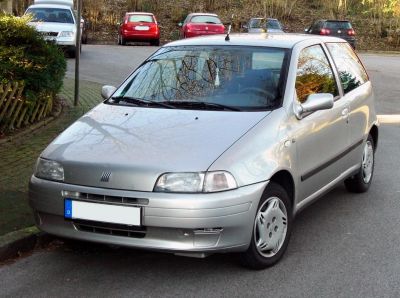
| Production: | 1997-1999 |
|---|---|
| Model Year: | 1997 |
| Length: | 3760-3770 mm148.0-148.4 in |
| Width: | 1625 mm64.0 in |
| Height: | 1440-1460 mm56.7-57.5 in |
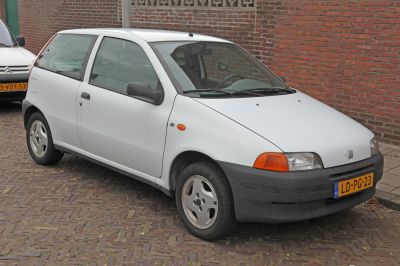
| Production: | 1993-1997 |
|---|---|
| Model Year: | 1994 |
| Length: | 3760-3770 mm148.0-148.4 in |
| Width: | 1625 mm64.0 in |
| Height: | 1450-1460 mm57.1-57.5 in |

| Production: | 1974-1983 |
|---|---|
| Model Year: | 1974 |
| Length: | 3723 mm146.6 in |
| Width: | 1610 mm63.4 in |
| Height: | 1410 mm55.5 in |
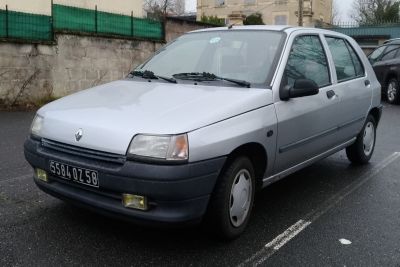
| Production: | 1990-1998 |
|---|---|
| Model Year: | 1990 |
| Length: | 3709 mm146.0 in |
| Width: | 1616 mm63.6 in |
| Height: | 1395 mm54.9 in |
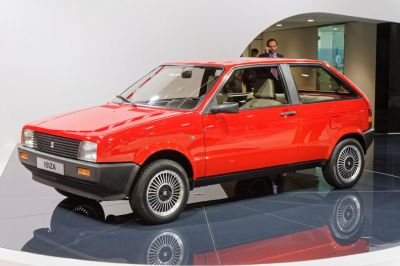
| Production: | 1984-1993 |
|---|---|
| Model Year: | 1984 |
| Length: | 3685 mm145.1 in |
| Width: | 1610 mm63.4 in |
| Height: | 1410 mm55.5 in |
